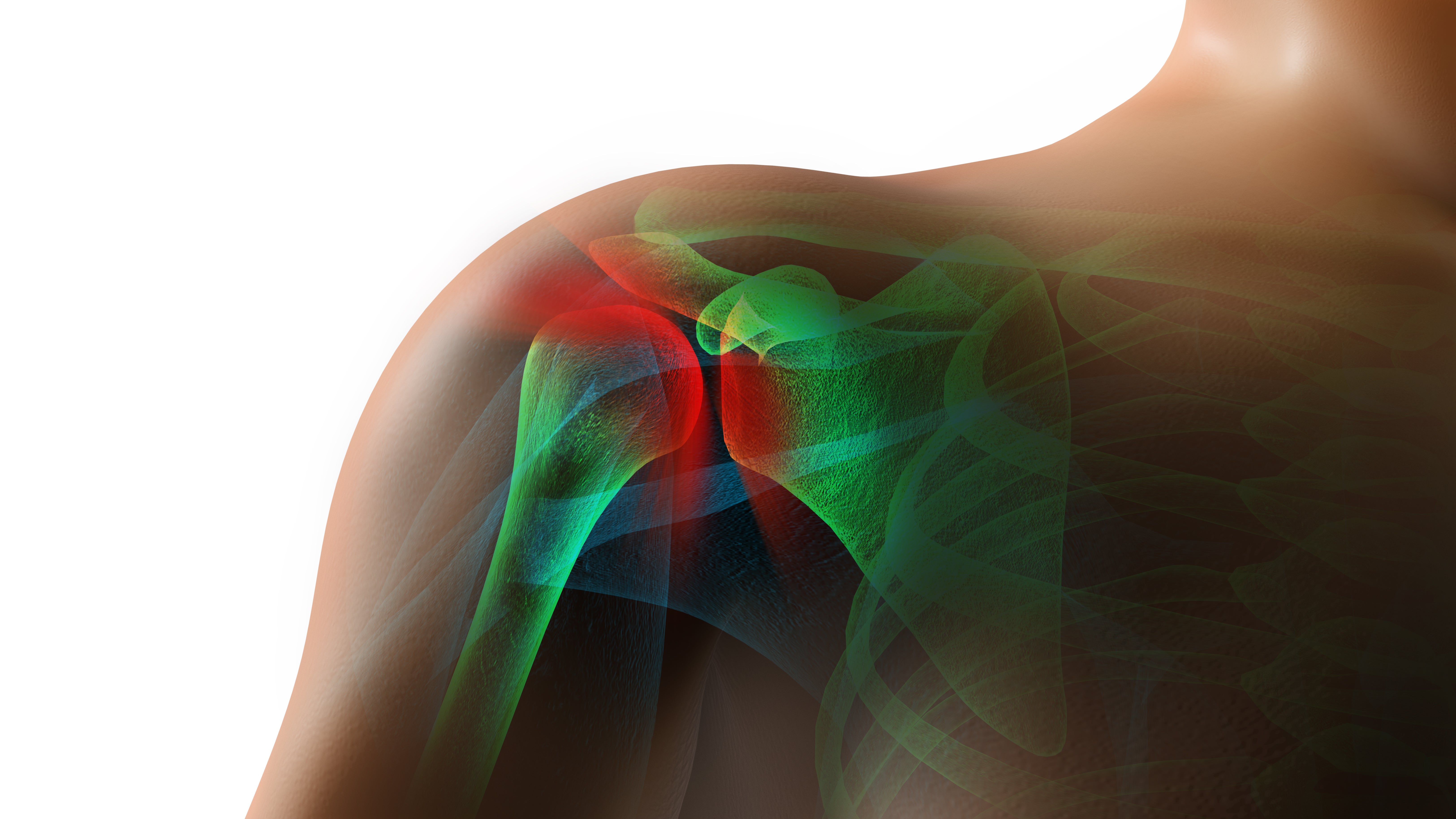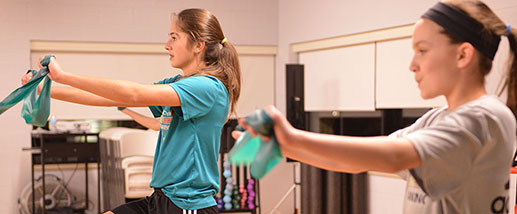Rotator cuff injuries come with age, but surgery is not inevitable
February 14, 2024
By: Darin Estep
Categories: Men's Health, Orthopedics (Bones, Joints, Muscles), Women's Health
Star athletes make headlines when they tear their rotator cuffs. But the real news is that an estimated 2 million Americans a year visit their doctor because of injuries to this collection of muscles and tendons that wrap around the shoulder joint.
Still more may have this condition and not even realize it — because it often produces no symptoms at all.
“Athletes are a small percentage of patients who have rotator cuff problems,” said Tim Lenters, MD, a Trinity Health Medical Group orthopaedic surgeon and expert in shoulder surgery.
“It's really a disease of getting older. They’re very common and we don't have a great understanding on why some of them hurt and most of them don't.”
Even when patients have shoulder pain, “the presence of a cuff tear may not be why your shoulder hurts, and operating on the tear may not be the best intervention when it is found on the MRI,” said Dr. Lenters.
“Yes, I am a surgeon. My job is often best done by telling you that surgery is neither needed nor beneficial for your problem.”
So, what is beneficial?
First, Dr. Lenters cautions patients against seeking routine MRI scans. These can cause unnecessary worry. Once a patient is beyond the age of 40, a scan is bound to detect any number of structural problems with the shoulder.
Instead, his advice is to consider shoulder function within the “4S” framework — Stiffness, Stability, Strength and Smoothness of movement without friction.
Rotator cuff injuries often result in a dull ache that can be felt deep in the shoulder. For example, you might have a torn or strained rotator cuff if:
- Raising your arm is difficult or painful
- Moving your arm produces popping or clicking sounds or sensations
- Shoulder pain worsens at night or when resting your arm
- Your shoulder feels weak, or you struggle to lift items
The right treatment depends on the type and extent of the injury, Dr. Lenters said.
Full tears vs. partial tears
One important distinction in rotator cuff injuries is partial-thickness vs. full-thickness tears.
In full tears, the whole tendon separates from bone. This often happens from a traumatic injury, such as a fall, but also can be the result of wear and tear over time.
“If you've had a specific injury, that's where I usually encourage an evaluation — we want to know if you have that traumatic type of full-thickness tear that could be best treated by fairly urgent surgical care,” Dr. Lenters said.
In those cases, the tendon usually is otherwise healthy and can be reattached surgically with good results.
In partial tears, part of the tendon has peeled back from its normal attachment to the bone. As a result, the bursa — a layer of tissue above the rotator cuff — can become inflamed and painful. Patients also may notice a loss of flexibility.
Therapy first
“Sometimes patients will ask (about physical therapy), ‘How long should I give this before I seek help?’” Dr. Lenters said. “It depends if there's been an injury. If not, and it's just been a slow process, I usually say to give it three to six months.”
The good news is that many problems with partial tears can be resolved with other approaches, Dr. Lenters said.
“The first goal of treatment for patients with a partial tear is to make sure the joint is not stiff,” he said. “So, we send them to physical therapy, stretch them out. And then the second thing that can be quite helpful is we can inject the inflamed bursa with a cortisone shot, which just settles it down and takes the pain away. And, with most of those shoulders, you can get those partial tears to settle down without surgery.”
If surgery does become necessary, it’s usually the same for partial or full tears: a minimally invasive arthroscopic procedure in an outpatient setting, with patients going home the same day, he said.
But then comes a long recovery.
“They're pretty laid up, six weeks in a sling, which is awful,” Dr. Lenters said. “They can't do anything with that arm. They sleep with the sling on, the shoulder is achy at night. Full recovery is six months to a year. It's one of the longest recoveries in all of orthopedics.”
That’s another argument for trying alternatives to surgery first, he said.
Prevention options
Dr. Lenters notes that, unlike shoulder arthritis, which will continue to progress once it starts, it’s possible to prevent rotator cuff disease from advancing. He recommends four approaches:
- Exercise: Regular exercise can help maintain overall strength in the shoulder, keeping the tendons healthy.
- Flexibility: Maintaining flexibility in the shoulder joint is critical, Dr. Lenters said. He highlights a series of four-quadrant stretches in another blog post.
- Nutrition: Proper diet is essential to overall tendon health. It’s especially important to avoid high-sugar diets, which have been linked to tendon tears.
- Safety: Don’t “push through the pain” in your activities. For example, if your job requires reaching overhead or pushing and pulling heavy objects, find ways to modify your approach to avoid straining your shoulder.
Dr. Lenters highlights these and other tips to avoid shoulder pain in this 60-second video.
He also covers rotator cuff injuries and many other topics on his blog, Grand Rapids Shoulder.
If you are experiencing persistent shoulder problems like weakness, stiffness, or pain, talk to your primary care provider. To request an appointment with an orthopedic expert, visit www.trinityhealthmi.org/ortho.



